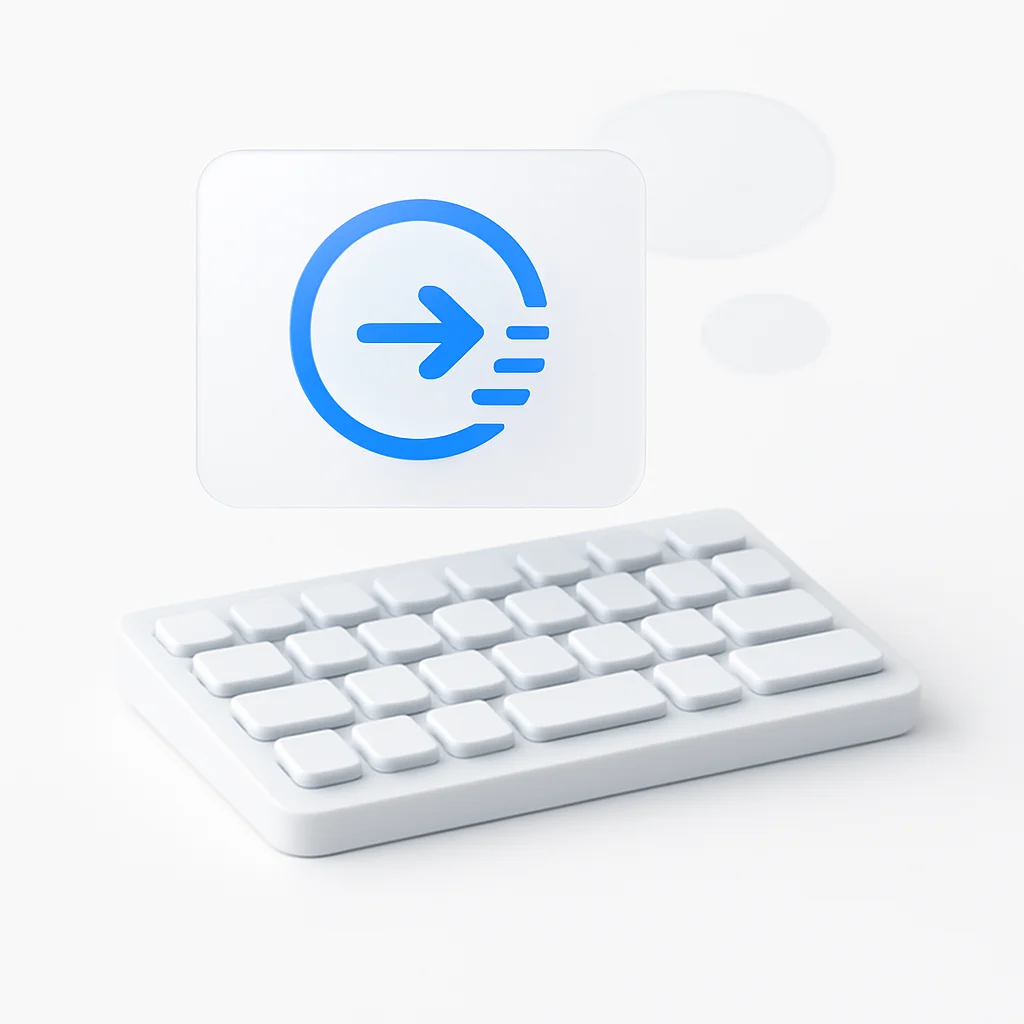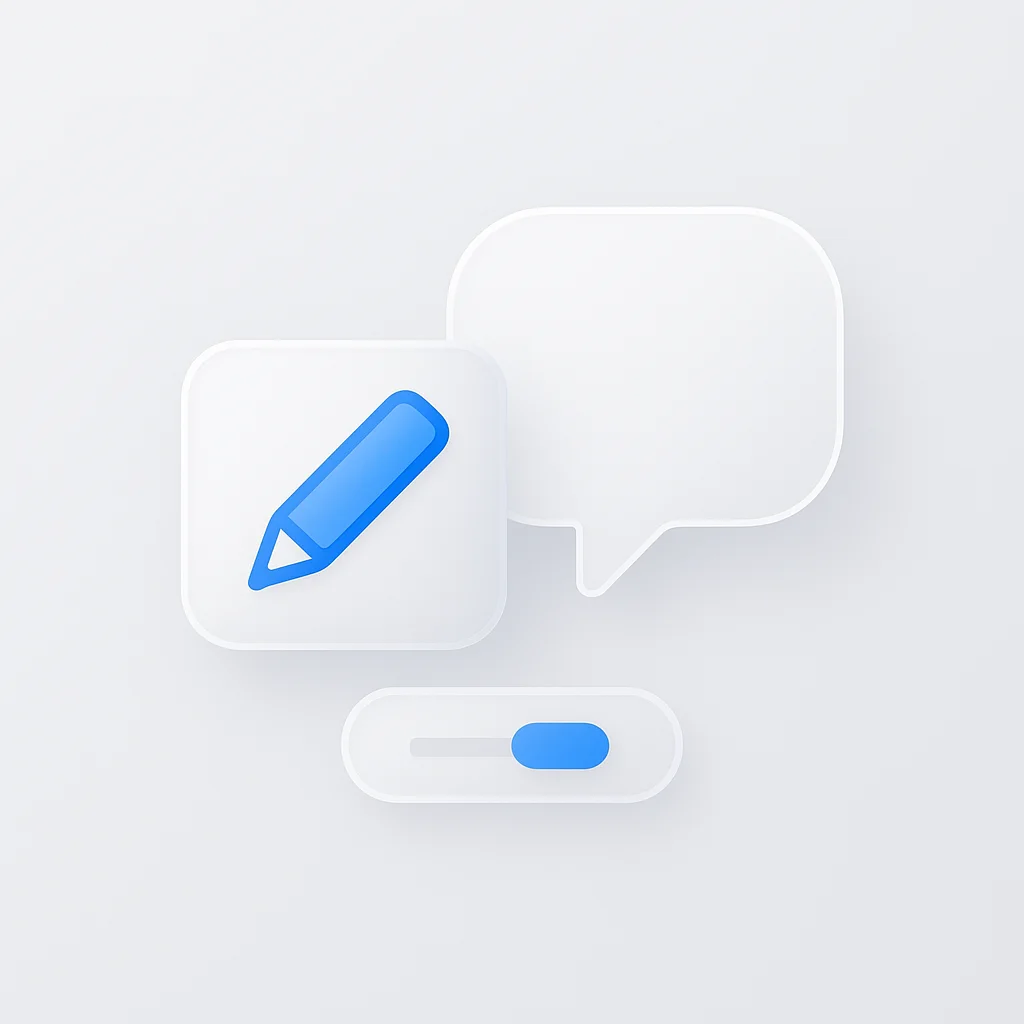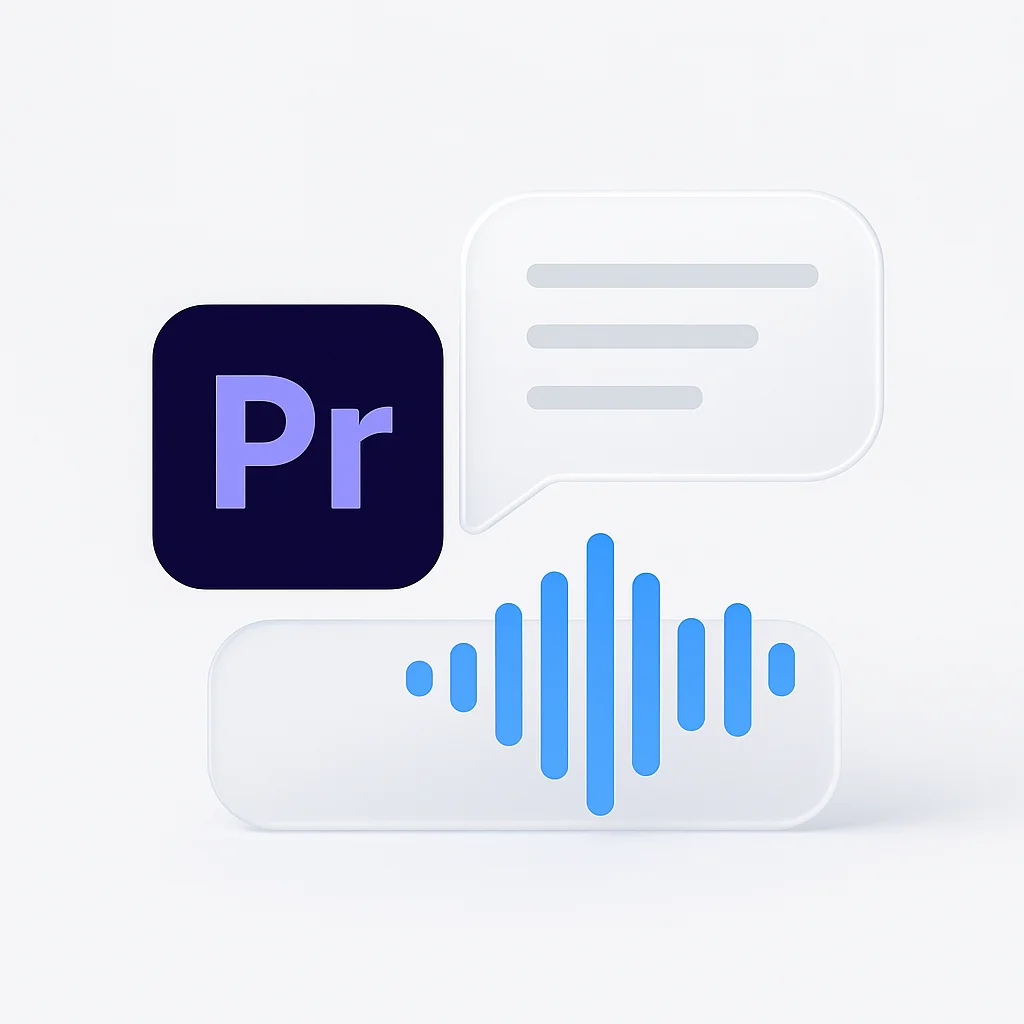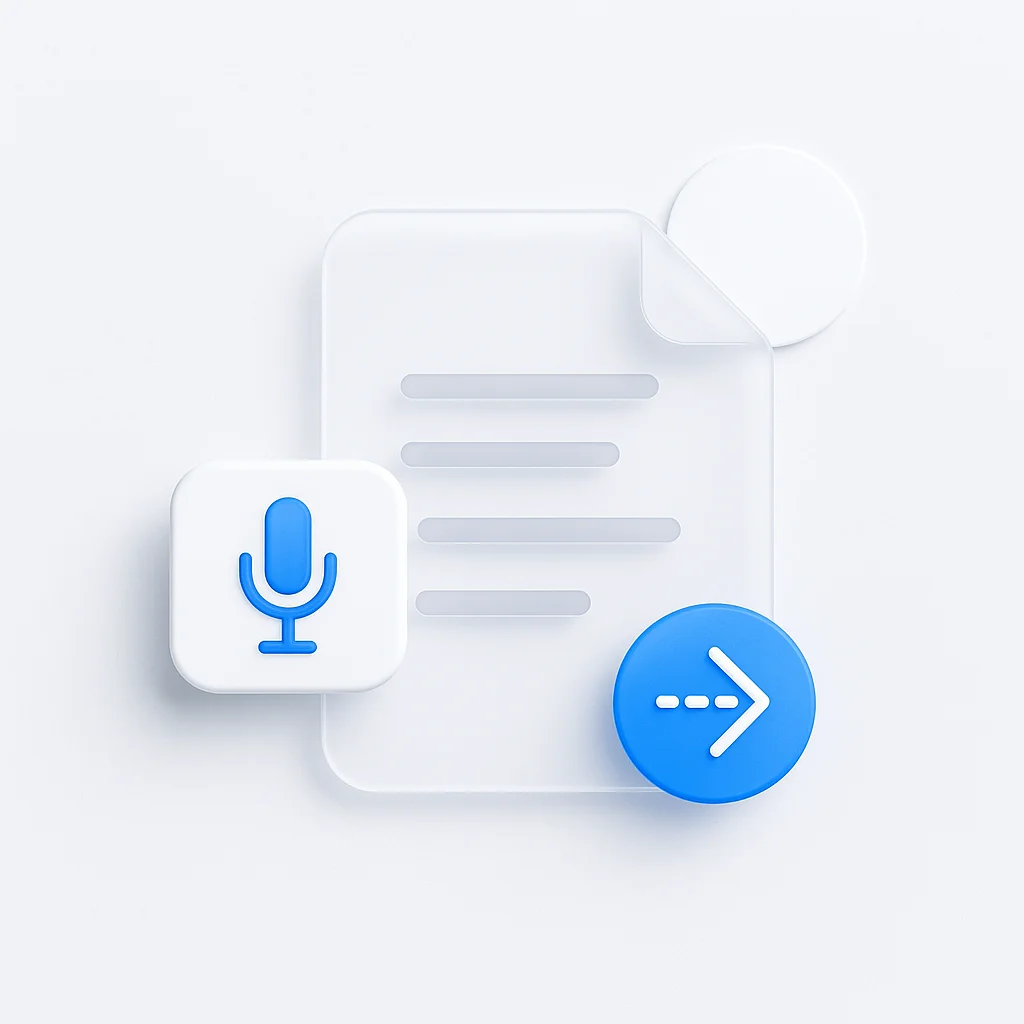In a world where digital communication dominates professional and personal interactions, your typing speed directly impacts your productivity. Whether you’re responding to emails, writing reports, or coding software, slow typing creates a bottleneck that limits your potential.
The difference between typing 30 WPM and 80 WPM isn’t just numerical - it’s transformational. Faster typing means less time staring at your keyboard, more fluid thought expression, and reduced fatigue during long writing sessions.
This guide provides a systematic approach to dramatically improve your typing speed and accuracy, taking you from frustrated hunt-and-peck typing to confident, rapid keystrokes.
What Counts as Good Typing Speed in 2025?
Understanding where you stand is crucial for setting realistic improvement goals. Here’s how typing speeds break down across different skill levels:
| Skill Level | WPM Range | Typical Users |
|---|---|---|
| Beginner | 10-30 WPM | New computer users, occasional typists |
| Average | 35-50 WPM | Most office workers, casual users |
| Professional | 55-75 WPM | Administrative staff, content creators |
| Advanced | 80-100+ WPM | Programmers, transcriptionists, competitive typists |
Is typing 40 WPM good? For basic computer use, yes. However, most professional roles benefit significantly from speeds above 55 WPM. Data entry positions typically require 60+ WPM, while programming and writing roles see major productivity gains at 80+ WPM.
Before diving into improvement techniques, take a baseline typing test using tools like 10FastFingers or Monkeytype. Record both your WPM and accuracy percentage - we’ll track these metrics throughout your improvement journey.
Building the Foundation: Ergonomics and Equipment
Creating Your Optimal Typing Environment
Poor ergonomics doesn’t just slow you down - it causes fatigue and potential injury that can derail your progress entirely.
Monitor positioning: Your screen should sit at arm’s length, with the top of the monitor at or slightly below eye level. This prevents neck strain and keeps your eyes focused forward rather than down at the keyboard.
Chair and desk height: Your elbows should form a 90-degree angle when your hands rest on the keyboard. Your feet should sit flat on the floor, with your thighs parallel to the ground.
Keyboard placement: Position your keyboard so your wrists remain straight and relaxed, not bent upward or downward. Consider a keyboard tray if your desk is too high.
Choosing Hardware That Supports Speed
Mechanical vs. membrane keyboards: Mechanical keyboards provide tactile feedback that helps you feel when keys actuate, reducing the need to bottom out each keystroke. This can increase both speed and reduce finger fatigue during long typing sessions.
Key considerations for speed:
- Low actuation force (45-50g is ideal for most people)
- Consistent key spacing and height
- Responsive switches that register quickly
- Comfortable key travel distance
Alternative layouts: While QWERTY dominates, layouts like Dvorak and Colemak can theoretically increase speed by placing common letters under stronger fingers. However, the learning curve is significant, and the speed gains may not justify the transition time for most users.
Mastering Touch Typing: The 10-Finger Foundation
Touch typing - using all ten fingers without looking at the keyboard - forms the cornerstone of typing speed. This isn’t just about memorizing key positions; it’s about developing muscle memory that makes typing as automatic as walking.
Proper Hand Positioning
Start with the home row: place your left fingers on A, S, D, F and your right fingers on J, K, L, semicolon. Your index fingers should rest on F and J, which have small bumps to help you find position without looking.
Key positioning principles:
- Keep wrists straight and floating slightly above the keyboard
- Curve fingers naturally, as if holding a small ball
- Use fingertips to strike keys, not finger pads
- Return to home row position after each keystroke
Breaking the Looking Habit
Most slow typists look at the keyboard because they lack confidence in finger placement. Here’s how to build that confidence:
Progressive practice: Start with home row keys only, then gradually add keys above and below. Use typing tools like Keybr that introduce new letters systematically based on your accuracy with existing ones.
Visual blocking: Cover your keyboard with a cloth or use typing software with on-screen hands to resist the temptation to look down.
Focus redirection: Train yourself to look at the screen, not the keyboard. Your fingers know where the keys are - trust them.
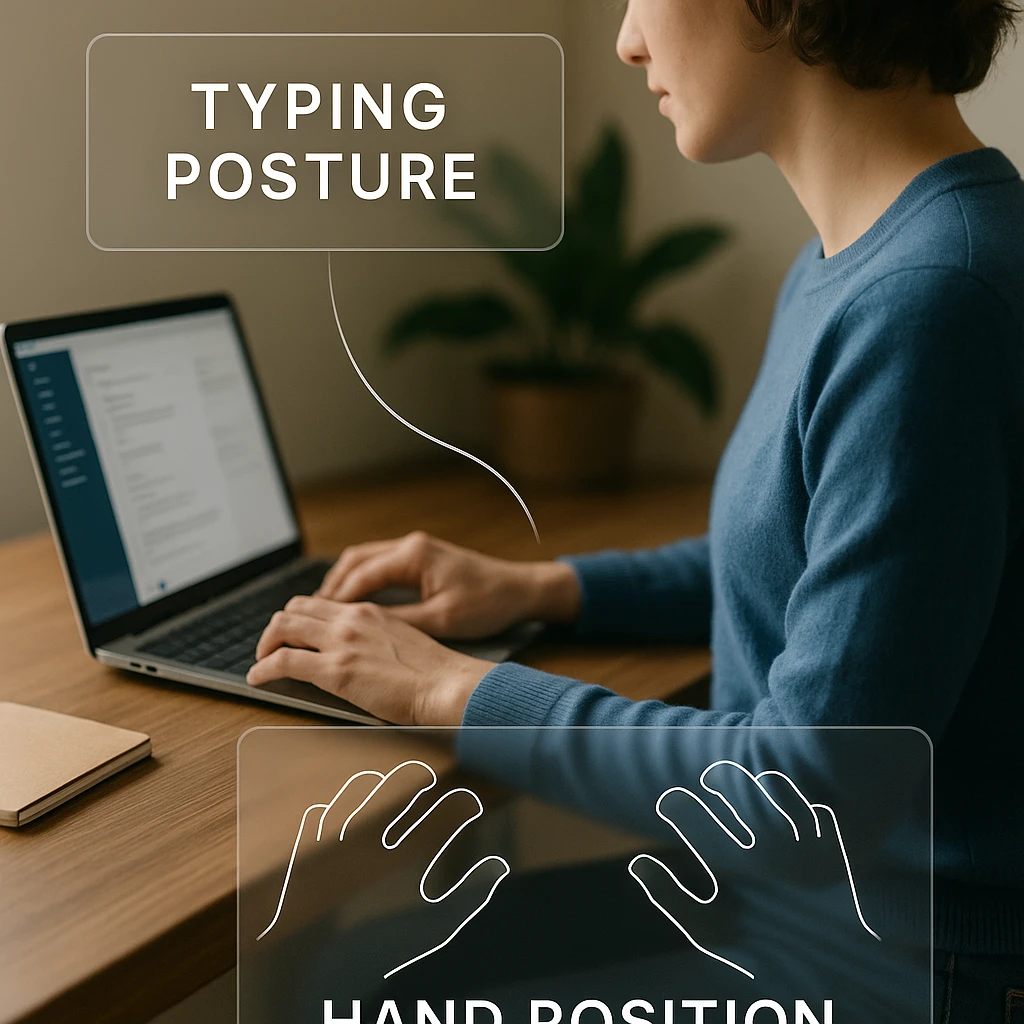
Your Daily Practice Routine: 15 Minutes to Transformation
Consistent, focused practice beats sporadic marathon sessions. This 15-minute daily routine targets different aspects of typing improvement:
Minutes 1-5: Warm-up and Weak Point Training
Use Keybr or similar adaptive tools that identify your weakest letter combinations. These tools adjust difficulty based on your performance, ensuring you spend time on areas that need improvement rather than practicing letters you’ve already mastered.
Focus on accuracy over speed during warm-up. It’s better to type slowly with perfect accuracy than quickly with errors.
Minutes 6-10: Speed and Rhythm Development
Switch to Monkeytype or TypeRacer for timed tests. Set your test duration to 1-2 minutes and focus on maintaining consistent rhythm rather than rushed bursts.
Rhythm techniques:
- Use a metronome app set to a comfortable pace
- Type to music with a steady beat
- Focus on even spacing between keystrokes
Minutes 11-15: Real-World Application
Practice with content relevant to your work:
- Copy passages from books or articles for general typing
- Practice coding exercises if you’re a programmer
- Type business emails or reports for professional context
This phase bridges the gap between typing exercises and practical application.
Breaking Through Speed Plateaus
Most typists hit plateaus around 40-45 WPM and 60-65 WPM. These barriers exist because your brain develops efficient but limited patterns that need conscious reshaping.
The 60 WPM Barrier
Why it happens: At 60 WPM, you’ve likely developed good basic technique but still rely on familiar letter combinations. Unfamiliar words or letter sequences slow you down significantly.
Solutions:
- Practice difficult word combinations specifically
- Use typing software that tracks error patterns
- Slow down to achieve 98%+ accuracy before pushing speed
- Practice typing backwards (starting from the end of words) to break established patterns
Accuracy-First Approach
Counter-intuitively, slowing down to improve accuracy often leads to speed breakthroughs. When you reduce errors:
- You eliminate time spent on backspace corrections
- Your confidence increases, leading to more fluid typing
- Muscle memory becomes more precise and reliable
Target 98% accuracy before pushing for higher speeds. This approach builds a solid foundation that supports sustained speed increases.
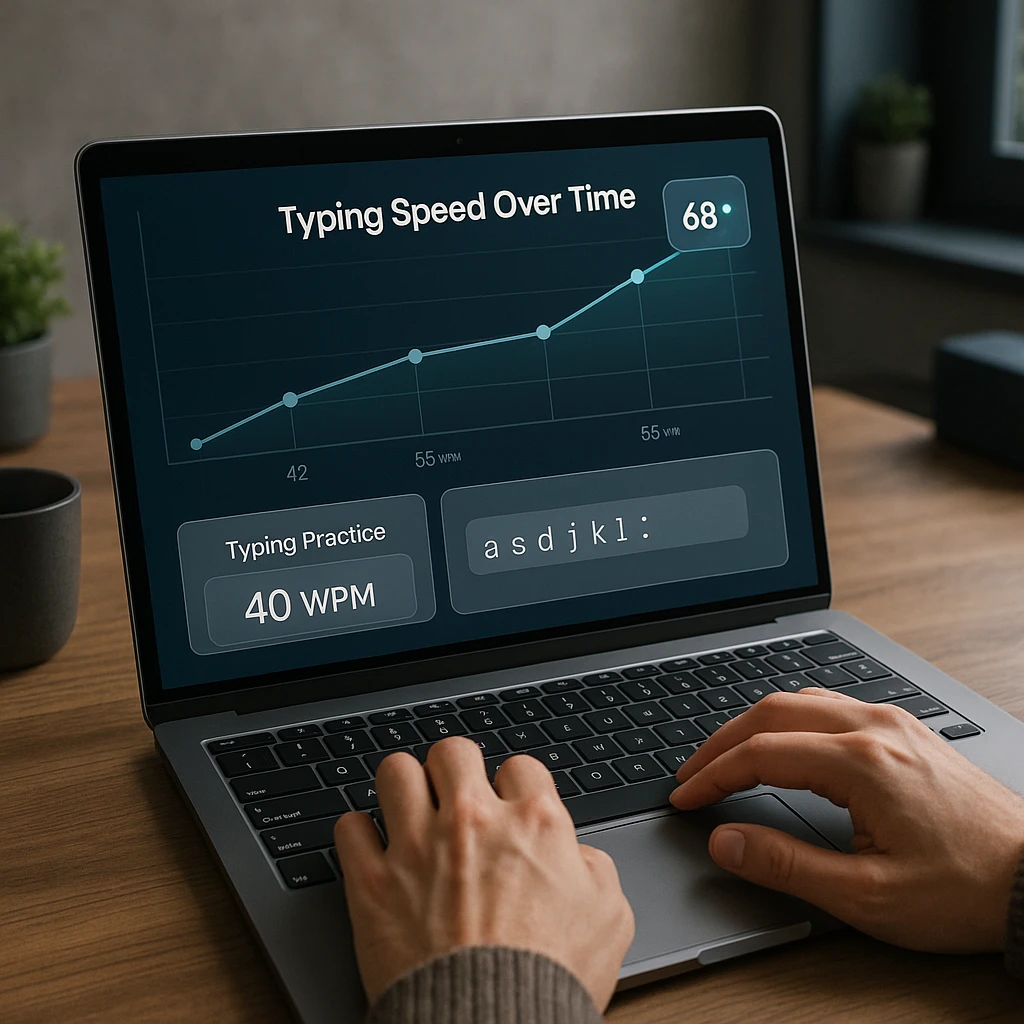
Essential Typing Tools and Games
For Structured Learning
- Typing.com: Comprehensive lessons with progress tracking
- Keybr: Adaptive learning that focuses on your weak points
- TypingClub: Gamified lessons with detailed analytics
For Speed and Competition
- Monkeytype: Highly customizable tests with extensive statistics
- TypeRacer: Competitive racing format with real-time multiplayer
- 10FastFingers: Simple, fast tests for quick speed checks
For Specialized Practice
- Codefights/CodeSignal: Programming-specific typing practice
- Epistory: Story-driven typing game that makes practice engaging
- ZType: Arcade-style game for building reaction speed
Beyond the Keyboard: When Not to Type
While improving your typing speed enhances productivity, some situations call for different approaches entirely. During meetings, trying to type comprehensive notes while actively participating creates a divided attention problem that reduces both note quality and engagement.
This is where ScreenApp’s AI-powered meeting transcription becomes invaluable. Instead of frantically trying to capture every word manually, ScreenApp automatically transcribes your Google Meet, Zoom, or Microsoft Teams meetings in real-time. The AI then generates organized summaries and action items, giving you professionally formatted notes without any typing required.
This allows you to focus fully on the conversation while still capturing complete meeting records - the ultimate productivity combination alongside your improved typing skills. With features like our AI Workflow Builder, you can automate even more of your note-taking workflow and boost productivity beyond just faster typing.
Advanced Techniques for Expert-Level Speed
Anticipatory Typing
As you become more proficient, start reading ahead in the text you’re typing. This allows your fingers to prepare for upcoming letter combinations while your conscious mind processes current words.
Common Word Patterns
English contains frequent letter combinations (digraphs and trigraphs) that appear repeatedly. Practice these patterns until they become single mental units:
- “tion”, “ough”, “ing”, “ment”
- “the”, “and”, “with”, “that”
- “qu”, “ch”, “sh”, “th”
Burst Training
Occasionally practice typing single words as fast as possible, focusing on smooth finger movements rather than individual keystrokes. This builds the muscle memory needed for rapid letter combinations.
Troubleshooting Common Problems
Finger Fatigue and Pain
- Take breaks every 20-30 minutes during long typing sessions
- Perform hand and wrist stretches regularly
- Ensure your wrists remain straight and relaxed
- Consider switching to a lighter-touch mechanical keyboard
Accuracy Problems
- Slow down temporarily to rebuild proper muscle memory
- Practice problem words individually before incorporating them into longer texts
- Use typing software that highlights error patterns
- Focus on one improvement area at a time
Inconsistent Speed
- Practice at the same time each day to build routine
- Warm up with familiar exercises before challenging material
- Track daily performance to identify patterns and optimal practice times
Frequently Asked Questions
How long does it take to reach 100 WPM? With consistent daily practice, most people can reach 100 WPM within 6-12 months, starting from average speeds around 40 WPM. However, this varies significantly based on current skill level, practice consistency, and natural aptitude.
Is mechanical keyboard necessary for fast typing? No, but it can help. Many fast typists use membrane keyboards successfully. The key factors are consistency, comfort, and responsive key action rather than the specific technology.
Should I learn Dvorak or Colemak instead of QWERTY? For most people, no. The time investment required to learn a new layout could be better spent improving technique with QWERTY. Consider alternative layouts only if you type professionally for many hours daily and are committed to the months-long transition period.
What’s the fastest typing speed ever recorded? The current world record is 216 WPM, set by Stella Pajunas in 1946 on an IBM electric typewriter. Modern computer keyboard records typically range from 160-200 WPM for brief bursts.
How important is typing speed for programming? While thinking and problem-solving matter more than raw typing speed, faster typing does improve programming productivity. Most professional programmers type 60-80 WPM, with the ability to maintain speed while typing code syntax accurately. For content creators and professionals conducting interviews or meetings that require documentation, tools like our interview recorder can eliminate the need for rapid typing during conversations entirely.
Your Path to Typing Mastery
Increasing your typing speed is a skill that compounds over time. Every improvement in speed and accuracy multiplies across every email, document, and digital interaction for the rest of your career.
The techniques in this guide work, but they require consistent application. Start with the daily 15-minute routine, focus on accuracy first, and trust the process. Within weeks, you’ll notice improved fluidity. Within months, typing will transform from a conscious effort into an unconscious tool that keeps pace with your thoughts.
Remember: the goal isn’t just to type faster - it’s to remove typing as a barrier between your ideas and their expression. When your fingers move as quickly as your mind thinks, you’ve achieved true typing freedom.
